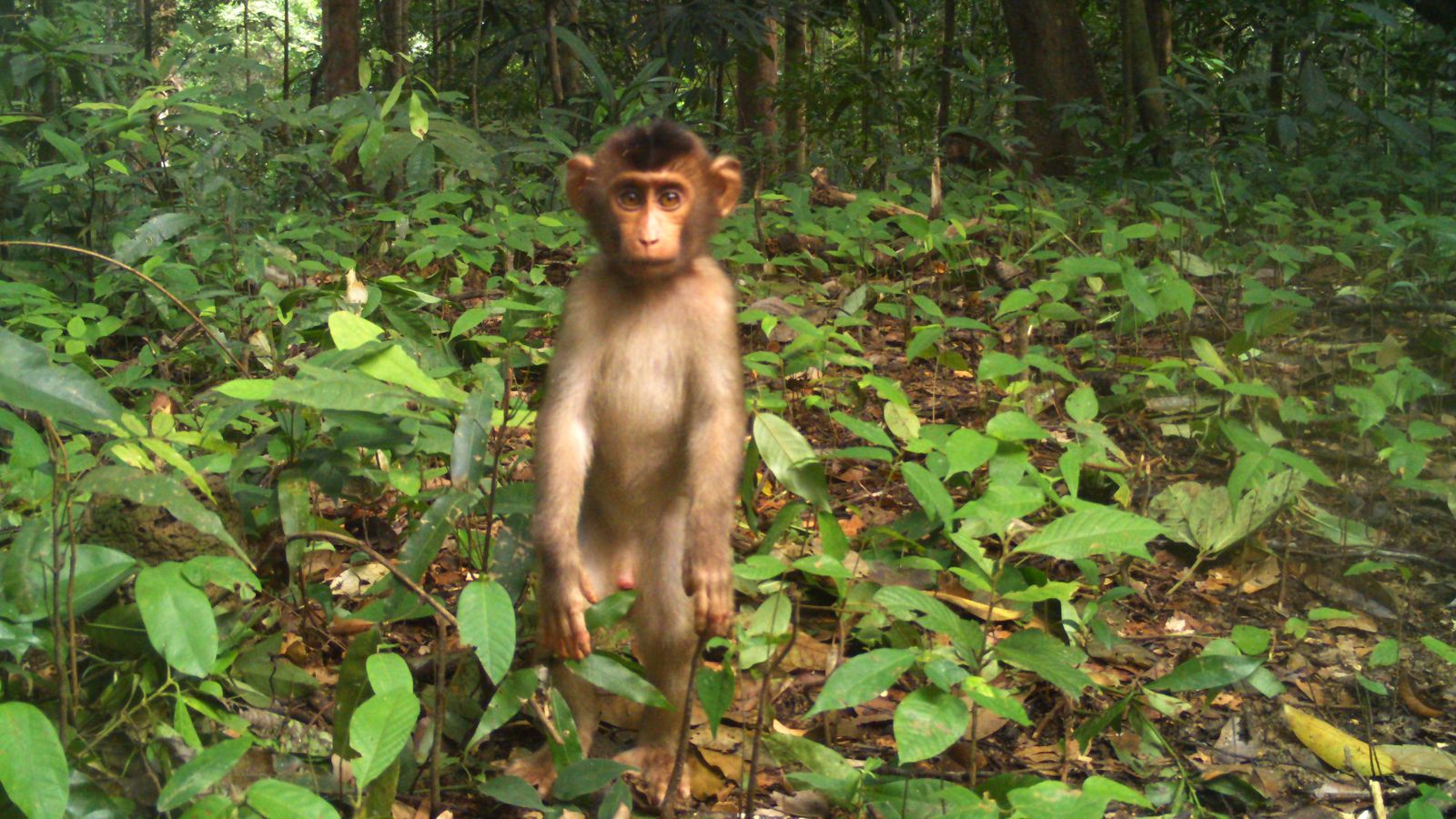Rising monkey and pig populations pose an increased risk to human health, according to new research.
The study by The University of Queensland suggested growing populations of wild pigs and macaque monkeys in Southeast Asia are threatening native forests and disease outbreaks in livestock and people.
Researchers have said humans are largely “to blame” for this due to palm oil farms which “provide food and ideal breeding conditions for these animals.”
To better understand things, Dr Matthew Luskin and his team gathered and analysed species population data from across three different countries.
The team analysed four pig and macaque species from Malaysia, Thailand and Indonesia.
Some of the data was collected with a network of cameras.
Lead author Dr Luskin said the team “saw that wild boar and macaque numbers were 400% higher in forests near the plantations than in untouched environments”.
The team of researchers said these animals often take “advantage” of the farmland and are seen raiding crops and “thriving on calorie-rich foods”.
The camera setups allowed researchers to better understand what was happening and gather an up-close experience of the increased number of animals.
During the study, the team encountered “huge troops of macaques” in these regions.
Dr Luskin added: “They were everywhere in the forest edges, following us and interfering with our equipment.
“At first it was frustrating but then was eerie as we became completely surrounded.”
Pigs and monkeys are often carriers of diseases which researchers have said can be “transmitted to people and they’re the most common species in a region considered to be the global zoonotic disease hotspot”.
A zoonotic disease is an infectious disease that is transmitted between species from animals to humans.
“The wildlife origins of the COVID-19 pandemic show that mammals in human-modified ecosystems often host high pathogen loads and pose serious zoonotic disease risks,” Dr Luskin said.
Read more from Sky News:
Intermittent fasting as effective as calorie counting for weight loss, study finds
Smart gloves could allow stroke patients to relearn the piano
Professor Carlos Peres from the University of East Anglia in the UK said the “abnormally” high increase in wildlife species that are disease reservoirs often occurs in human-modified tropical forests.
This, therefore, shows that the “densely settled rural areas in Southeast Asia may be a source of future human epidemics”, Professor Peres said.
University of East Anglia and Southern University of Science and Technology (China) PhD candidate Jonathan Moore said the immediate effects of the population explosions could be seen on native flora in the affected regions.
Native flora’s are plants that have been growing in a particular habitat and region, typically for thousands of years or longer, according to the University of Rhode Island.
“Both pigs and macaques trigger negative cascading impacts in these pristine ecosystems,” Mr Moore added.
“They kill the seeds and seedlings of native plants and eat bird and reptile eggs.”
Mr Moore said the Malaysian pigs were found to reduce “rainforest tree regeneration by 62%”.
Given the results of the study, researchers have said action is needed to minimise population expansions of wild pigs and macaque monkeys.
Dr Luskin added: “Efforts to manage the populations of these species have failed in the past because of their rapid reproductive capacity and public outcry.
“Nobody favours needless killing of wildlife but the negative social and ecological impacts from hyperabundant pest species does demand ethical and urgent management solutions.”
In conclusion, researchers said wildlife “origins of the COVID-19 pandemic and alarming recent work show that generalist mammals persisting in human-modified ecosystems often host high pathogen loads and pose serious zoonotic disease risks, emphasising the importance of new research in these areas”.
The research on human disease due to pigs and monkeys was published in the Biological Reviews Journal.
What is a population explosion?
A population explosion is a sudden increase in the number of individuals in a species in a certain area at a given time.
If this occurs, it can cause serious concerns.
Be the first to get Breaking News
Install the Sky News app for free
How do humans modify ecosystems?
Human-modified ecosystems are shaped by human activities and their side effects.
This includes climate change, ocean acidification, permafrost melting, habitat loss, eutrophication, stormwater runoff, air pollution, contaminants, and invasive species.
What is a disease reservoir?
According to the Centers for Disease Control and Prevention (CDC), the reservoir of an infectious agent is the home in which the agent normally resides, grows and multiplies.
“Reservoirs include humans, animals, and the environment. The reservoir may or may not be the source from which an agent is transferred to a host,” it added.
The CDC has also said that many common infectious diseases have human reservoirs.
It said: “Diseases that are transmitted from person to person without intermediaries include the sexually transmitted diseases, measles, mumps, streptococcal infection, and many respiratory pathogens.”





